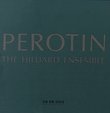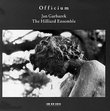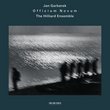| All Artists: Jan Garbarek, Hilliard Ensemble Title: Mnemosyne (ECM New Series) Members Wishing: 5 Total Copies: 0 Label: ECM New Series Release Date: 5/18/1999 Genres: Jazz, Classical Style: Modern Postbebop Number of Discs: 2 SwapaCD Credits: 2 UPC: 781182170025 |
Search - Jan Garbarek, Hilliard Ensemble :: Mnemosyne (ECM New Series)
 | Jan Garbarek, Hilliard Ensemble Mnemosyne (ECM New Series) Genres: Jazz, Classical
It's been six years since these same performers got together to create one of the decade's more unusual experiments in musical alchemy. Beginning with the raw materials of early music and modern jazz, the four male voices ... more » |
CD DetailsSynopsis
Amazon.com It's been six years since these same performers got together to create one of the decade's more unusual experiments in musical alchemy. Beginning with the raw materials of early music and modern jazz, the four male voices of the Hilliard Ensemble joined with jazz saxophonist Jan Garbarek to see what would happen when the proper measure of old music and new style were combined, shaped by the performers' considerable experience and collective aesthetic vision. The success of that recording, titled Officium, and subsequent concert performances paved the way for this second effort, continuing the performers' search for artistically meaningful, musically satisfying combinations of written music and improvisatory elements. The odd title of the new recording comes from a mystical poem by Friedrich Hölderlin, quoted in the liner notes and accompanied by pictures from Ingmar Bergman's The Seventh Seal. Officium aficionados will notice that Mnemosyne is even more adventurous in its explorations, which range farther and farther from the printed page. Musical fragments and a general outline are the starting points for several pieces. Improvisation is more frequently and freely employed, but always adheres to an agreed stylistic framework. Alongside a Tallis hymn or a chant by Hildegard, we hear Iroquois and Peruvian song fragments, an ancient Greek tune, and a beautiful lullaby by Veljo Tormis. Garbarek's tasteful improvisations are appropriate additions, inspired commentaries. The Hilliards are even better than on Officium; their awareness and sensitivity brings everything together into a truly unified expression that shows the timelessness of music and reminds us that where rhythm, melody, and musical imagination join, different styles, centuries, and genres are not necessarily obstacles to compatibility. --David Vernier Similar CDs
|
CD ReviewsA winter"s night Arturo Tomas Linn | Montevideo, Uruguay (South America) | 07/23/2005 (5 out of 5 stars) "Though I am not much of an expert in music as to write a good review, I have enjoyed Jan Garbarek's saxo for many years now, and most recently his previous work with the Hilliard Ensemble, "Officium". What else can I say? Just imagine a cold winter's night (and nights are cold these day in the Southern Hemisphere), cudled inside your home, by the fireplace, with the company of a good book, smoking your pipe, sipping some good french brandy and listening this marvelous music. What else can compare to such an experience? Tomás Linn" Sonorous beauty Christopher Pennello | Berkeley, CA, US | 07/27/2002 (5 out of 5 stars) "This album is pure bliss. Garbarek's soaring saxaphone playing accents and brings passion to the already rich and wonderful midieval choral pieces. Although the sax's melody lines are similar from certain tracks to certain tracks, I couldn't get tired of listening to this CD."
|

 Track Listings (10) - Disc #1
Track Listings (10) - Disc #1


